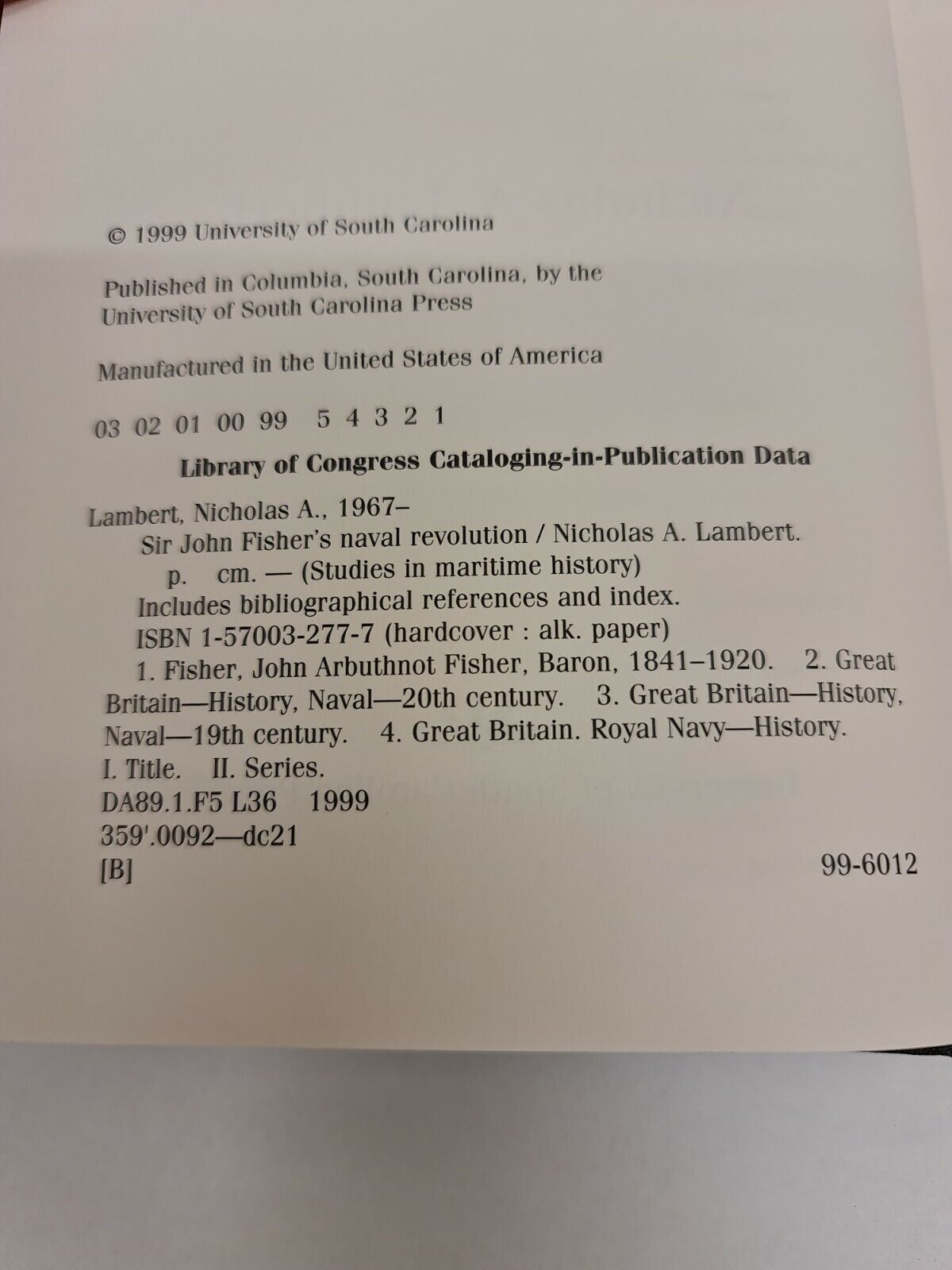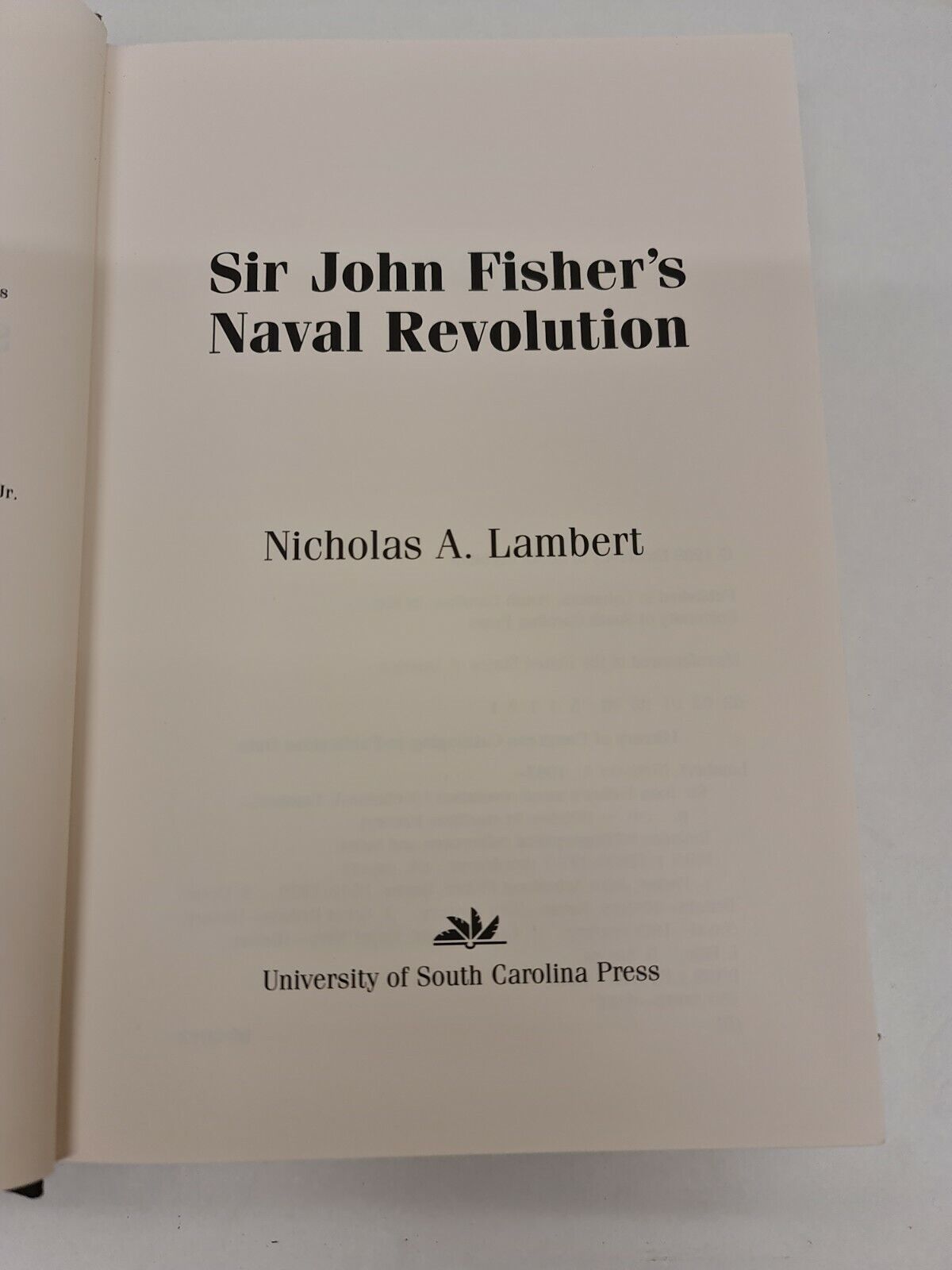Books and Crannies Shop
Sir John Fisher's Naval Revolution by Nicholas A. Lambert (1999)
- Regular price
- £30.99 GBP
- Regular price
-
- Sale price
- £30.99 GBP
- Unit price
- per
Couldn't load pickup availability
Condition
Pages crisp and clear with tight binding. Michael Howard's book plate and name inscribed to inside cover. Margin annotations. Little wear to dust jacket. See images
Product Details
- Format - Hardback
- Pages - 410
Synopsis
A thorough understanding of naval policy is essential to comprehend the political, economic and social history of Great Britain before World War I. For most of the 20th century, historians have thought that British naval policy was driven by the Anglo-German arms race. After examining a prodigious quantity of primary sources, Nicholas A. Lambert concludes that Admiralty decision-making was in fact driven by factors totally unrelated to the German building programme. More important domestic considerations influenced these decisions - primarily the inability of the British state to provide sufficient money for maintaining an adequate warship building programme while meeting political demands for the creation of a national system of welfare relief. Sir John Fisher's Naval Revolution explores the intrigue and negotiations between the Admiralty and leading domestic reformers of the day, such as Herbert H. Asquith, David Lloyd George and Winston Churchill, and shows how the politicians regarded the issues of naval strategy and finance as central to the success of their proposed social reforms. Lambert also explains how Great Britain's naval leaders responded to these challenges under the direction of Admiral Sir John Fisher, the service head of the Admiralty from 1904-1910. The government of the day appointed Fisher to his post, Lambert demonstrates, expressly because he was prepared to cut naval spending. The author also shows why Fisher came to believe that the only way to preserve Britain's traditional mastery of the seas at an affordable price was to adopt a radically new approach to naval defence. Under Fisher's leadership, the Royal Navy invested heavily in emerging technologies - such as analogue computers for gunnery fire-control, long-range torpedoes, aircraft and wireless telegraphy - and created new types of warships such as the battle cruiser and the patrol submarine. At the same time, Fisher encouraged his naval colleagues to abandon the traditional strategic principle of seeking battle with the enemy's main fleet, proposing instead that the Admiralty adopt an indirect approach to warfare by focussing on the enemy's economic system. For mainly political reasons, however, Fisher concealed his military technological revolution during the ten years preceding World War I from successive prime ministers as well as from much of the navy's officer corps. Thus, while appearing to cooperate with the wishes of his political masters, who wanted him to limit his strategic focus to home defence, Fisher continued working surreptitiously to create a new model fleet capable of protecting all of Britain's imperial interests across the globe.
Please note: books on the website are not in the Beccles shop, please contact us if you wish to see something
Share




















